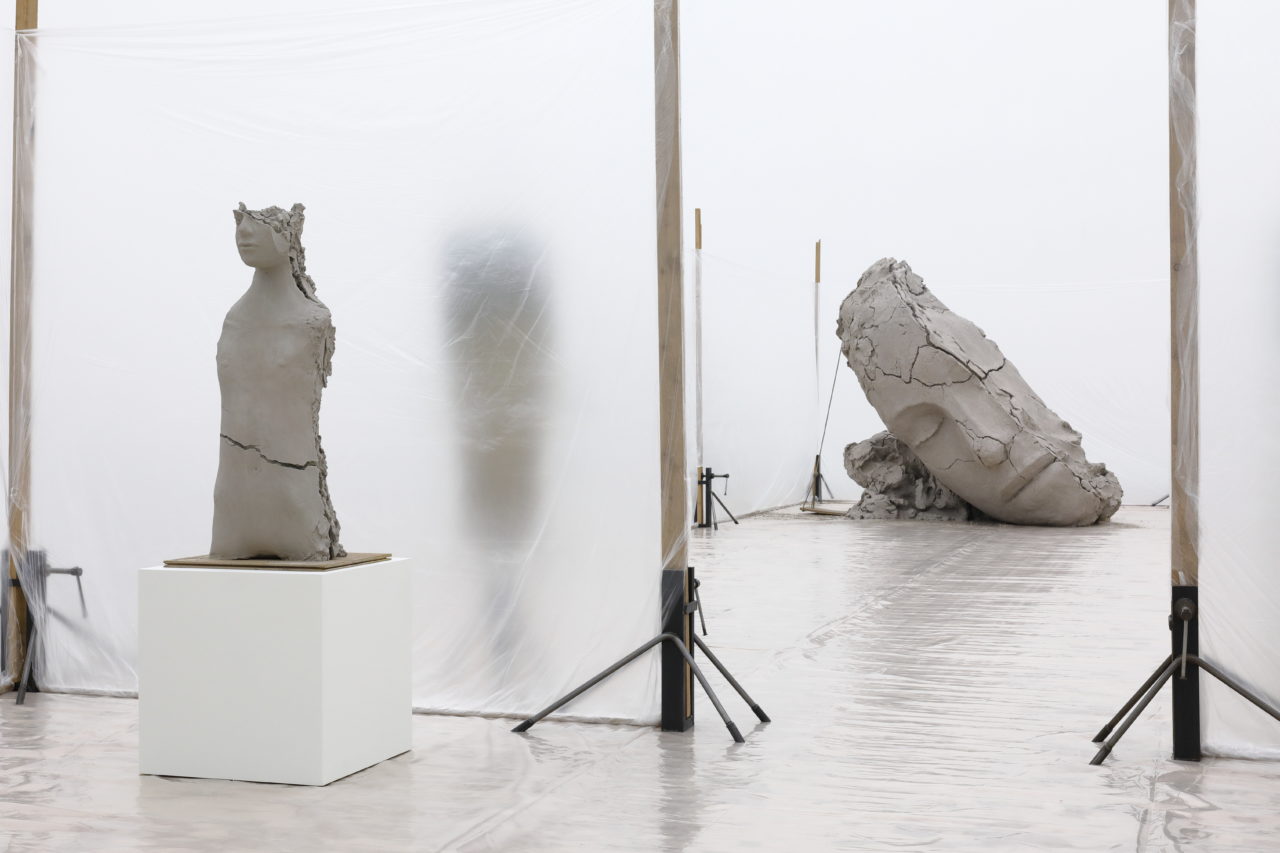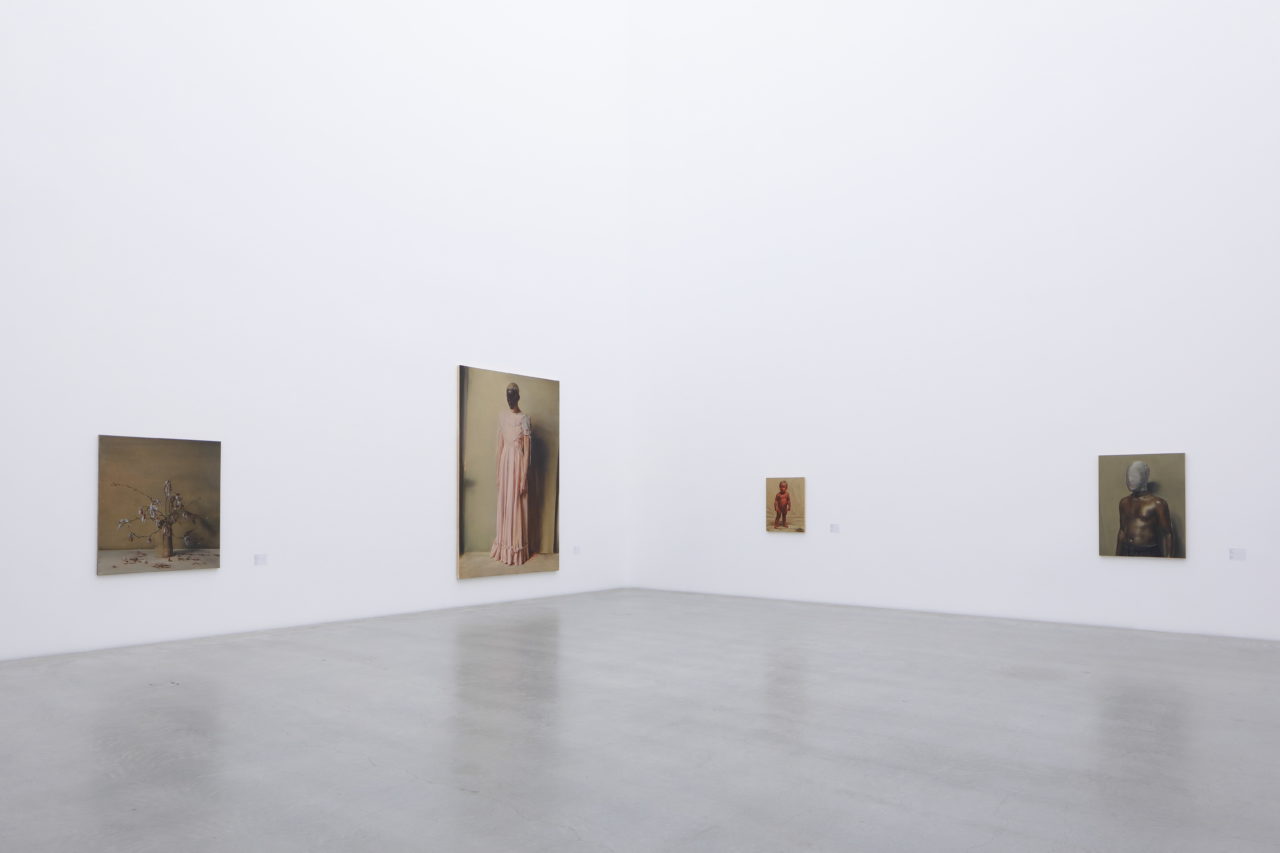DOUBLE SILENCE
Double Entendre: Artists Michaël Borremans & Mark Manders in Kanazawa
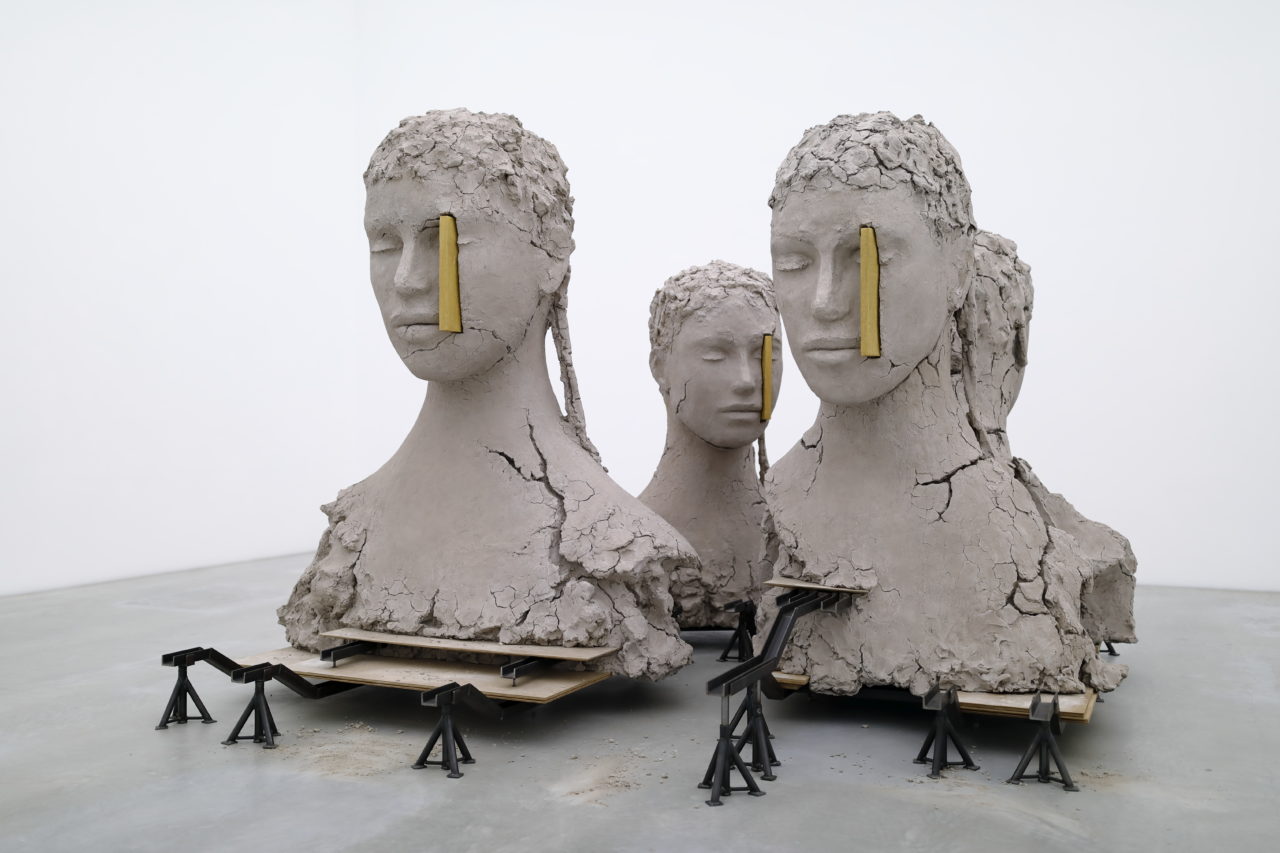
Kanazawa’s 21st Century Museum of Contemporary Art presents the exhibition of both Belgian painter Michaël Borremans and Dutch sculptor Mark Manders — a joint exhibition that offers a surprisingly new and transformative experience of both artists’ work in the space and completely new context.
It is the first time at a museum that both artists’ works are presented alongside the other, complimentarily juxtaposed and offering a new narrative for contemporary art. Manders’ large and demanding sculptural forms are graciously positioned by the drawings and oil paintings of Borremans — his two-dimensional works presenting equally inquisitive and complex forms.
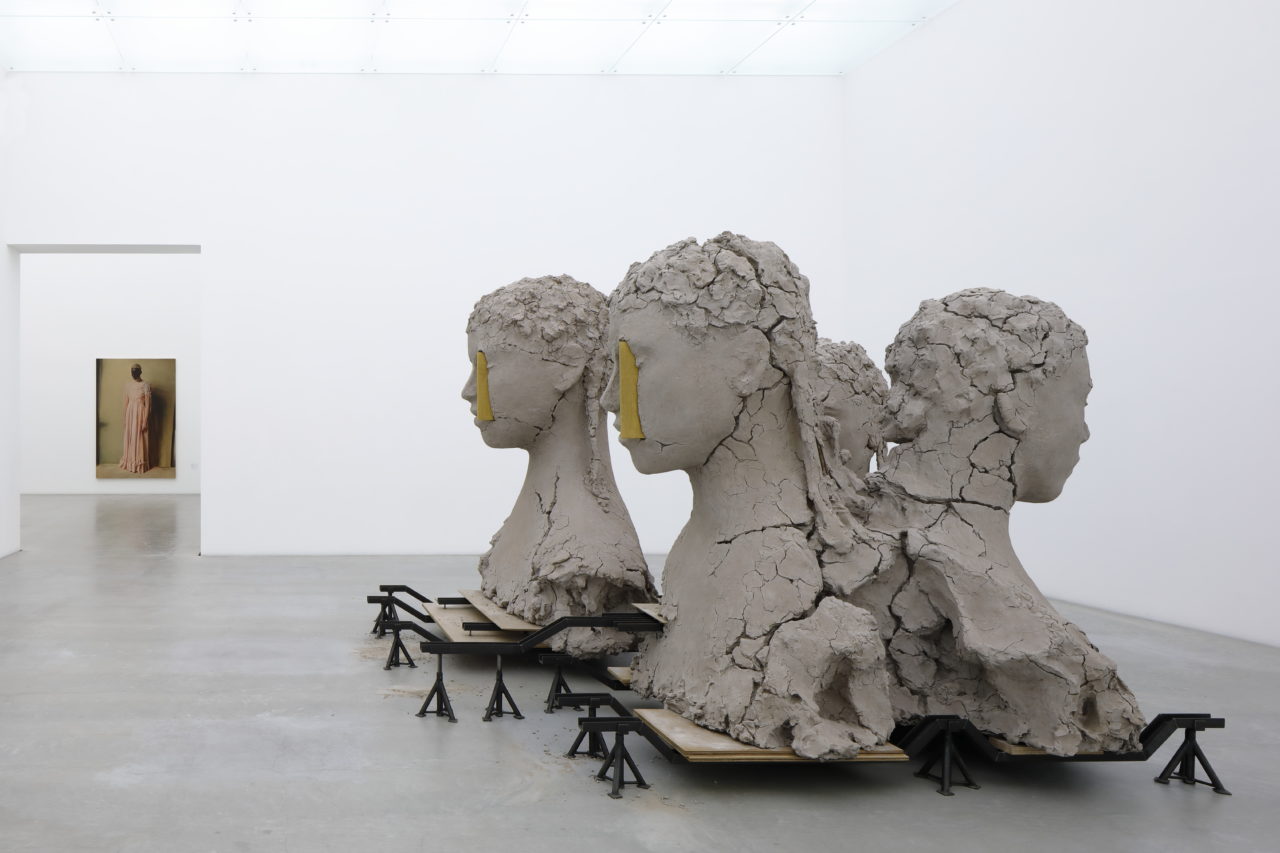
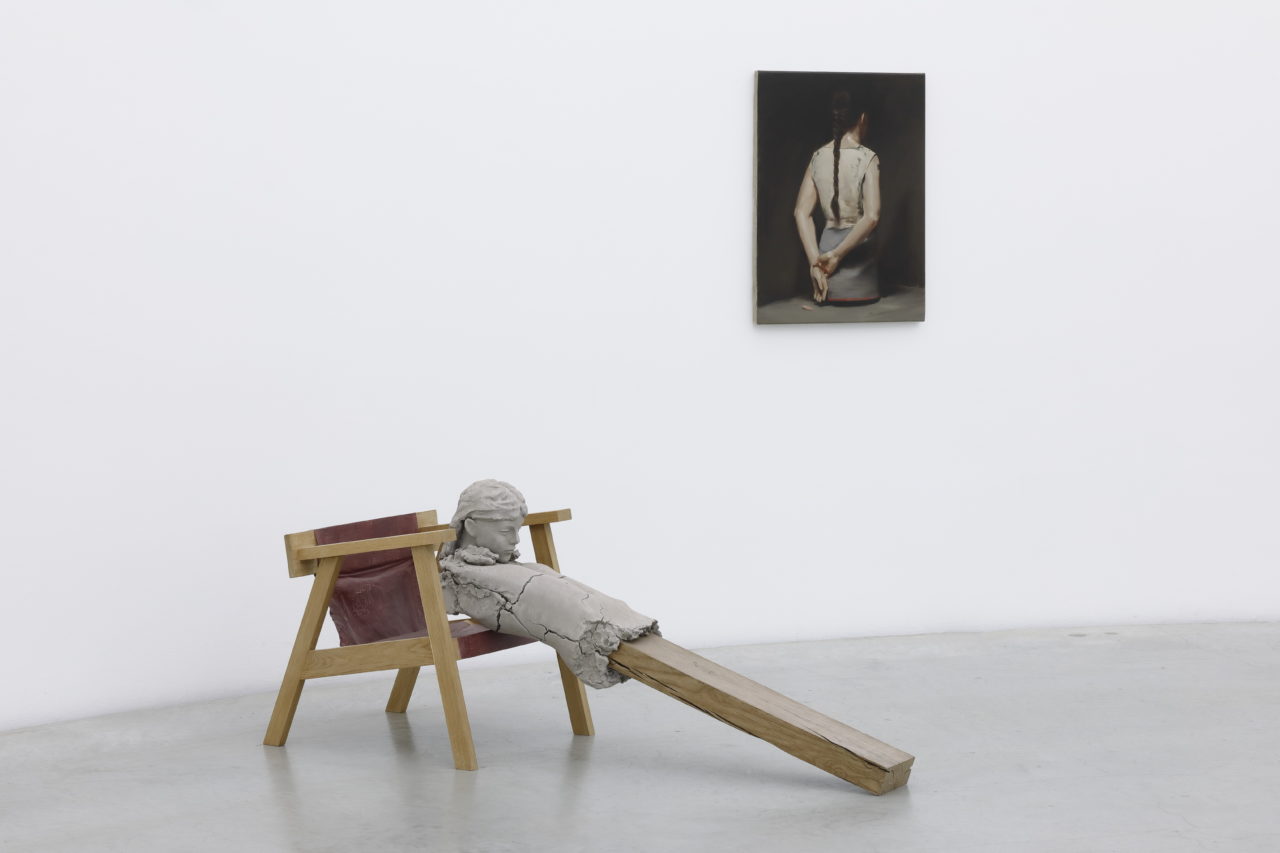
Curated by Hiromi Kurosawa, Chief Curator of 21st Century Museum, Double Silence presents a fluid navigation of space as a journey through the worlds of Borremans and Manders’ view of the museum and his works as a self-portrait within the building. We spoke with Hiromi Kurosawa on how the exhibition presents an intriguing, “intervention” between both artists’ works, and the importance of their traditional mediums reinstating the understanding of contemporary art today.
Kurosawa first notes how the joint exhibition concept came to realisation. “The first time I saw their work together was serendipitous. As they are represented by the same gallery, Zeno X Gallery in Antwerp, one time I visited, Michael Borremans work was hung on the wall, and Mark Manders was on the floor as they were getting ready for installation, and it seemed to click. I then realised it was extremely interesting and intriguing, and it wasn’t just because we had two super famous artists in the same frame, it was because its Mark Manders’ private world, building a self-portrait, and then you had this intervention — by Michael Borremans. That’s why it was so interesting. It wasn’t a violent intervention, it was an intervention of a level of a concept — and it was also incredibly beautiful. That’s when I started thinking that perhaps you could do a double, two-person show, together.”
Double Silence is a culmination of the historical and contextual longevity of art. Kurosawa explains, “We have recently been talking about (Japanese daimyo) Oda Nobunaga from the Sengoku era. Still, after 400 years, we are looking for something new from that era. [In relation to Double Silence with Michaël Borremans and Mark Manders], we are trying not to excavate something old, but to evoke something new to you. It is not about discovering unknown facts, but really about trying bring things to attention through a physical experience.”
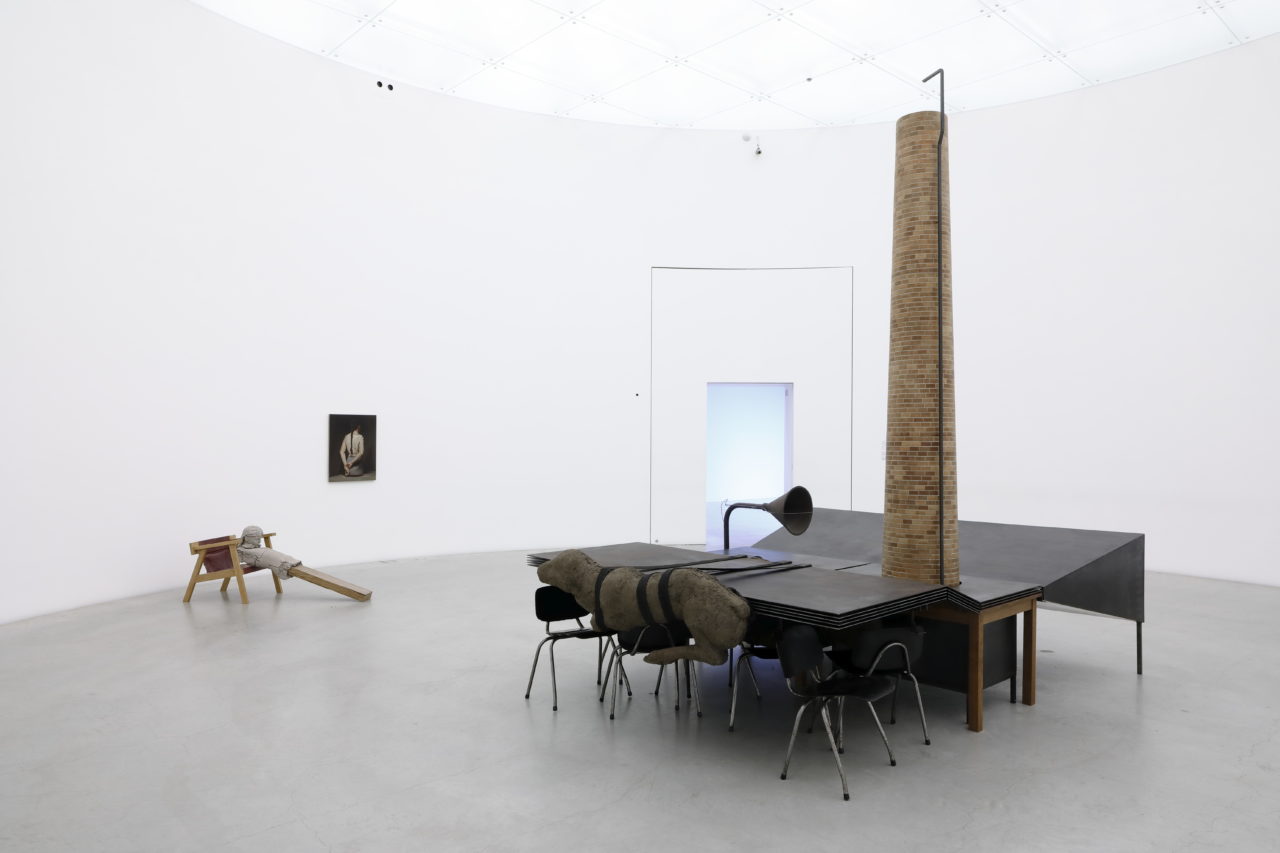

Working from an initial photograph, staged and taken by Borremans himself, he then repetitiously paints and repaints the image until settling on a result. Each shadow, angle and expression can differentiate, reflecting varying meanings or subjectiveness. Heavily influenced by the Spanish baroque period painter Diego Velázquez and Édouard Manet, the French 19th century modernist painter, Borremans’ dark, enigmatic works hold a sense of anxiety and uncertainty — requiring a double take and extended glance to determine the various layered meanings and details incorporated within.
Whilst evidently appearing as large, clay sculptures, the work of Manders’ are in fact bronze structures layered with paint. It’s a surprising twist that forces the viewer to completely reimagine his practice — one built with the power and persistence of his body — as a fragile exploration of fact and fiction. As an endless self-portrait, he positions his works in the context of the museum — self-aware and space-aware. Language and the understanding of his surroundings are critical to Manders’ works, where here at 21st Century Museum they have been perfectly executed. Kurosawa explains, “Basically, Mark Manders has this really good sense of spatial awareness and he really understood where the works were going to compliment the best. As a curator of course you have this idea of a narrative, of how you’re going to get the story, most cases he won, I lost.”
Throughout the challenge of an already unpredictable year, the exhibition presents the ongoing relevance of traditional practices in contemporary art, remaining reverential against current technological advances. Kurosawa continues, “The most important thing I took away from this exhibition was that for the past two decades or so, technology has been making various advances. Basically, if you are a contemporary artist today, you’d be pursuing the latest technology, the latest new technique or the latest new medium. Personally, deep down I’ve always felt some trouble, that there has been this emphasis on the latest, the most brightest, the most advanced technology where people are ignoring the validity and importance of traditional media and the traditional forms of expression.”
Kurosawa highlights the importance of a works’ meaning — above any superficial associations — that ensures it’s relevance. She explains, “I’ve always believed that how strong the work is, is not determined by the age or how new it is. Even if it is from the Greek or Roman Classical period, if it speaks to you — it is working. Because, we are all human, and there has been no fundamental difference to that. A good work speaks to us on every level, and age has nothing to do with it. I have no way of determining how we have evolved, developed or changed, but works which are 2000 years old can still speak us and we can relate to them. If the artists are willing to listen to what these works have to say to us, then I think it’s really important that we at least listen to what they have to say to us.”

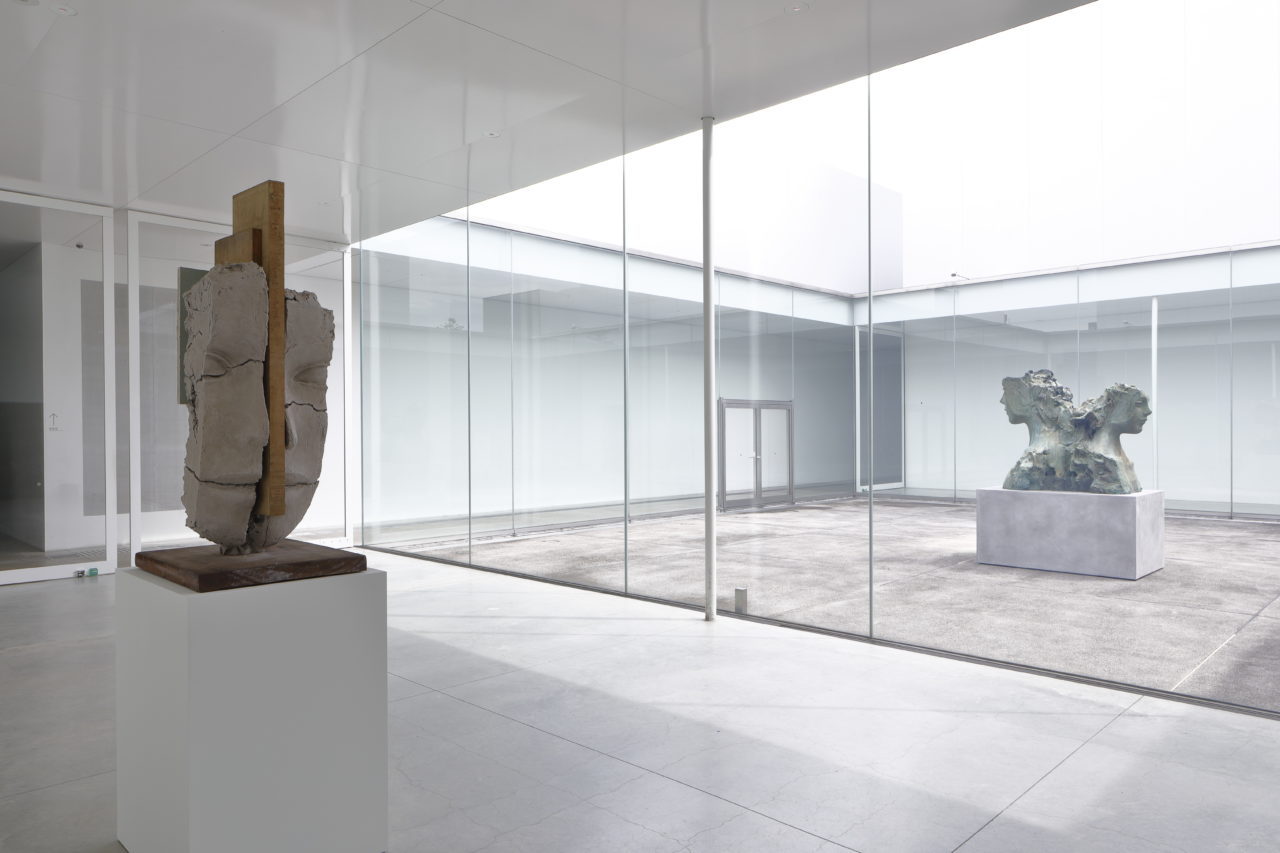
Michaël Borremans and Mark Manders
21st Century Museum of Contemporary Art, Kanazawa, Japan
2020.9.19 – 2021.2.28
